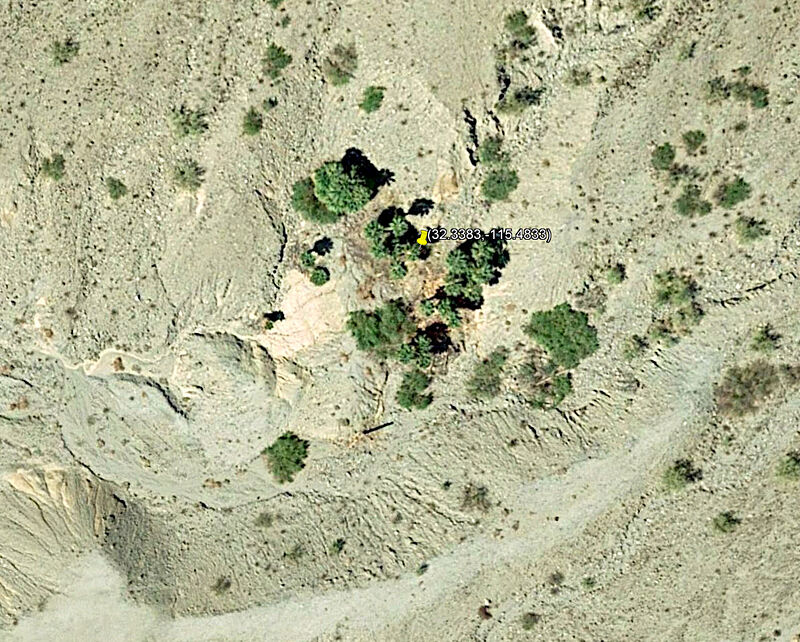Pescadores Fumarole
One of the most surprising rupture-related phenomena found along this segment is an active fumarole that appeared in a wide alluviated valley near the
southern end of the Pescadores fault (Figs. 11 and 13). The Pescadores fumarole constantly emits a prominent vapor cloud that can be seen from
distances of several kilometers, and the vapor cloud occasionally rises above nearby peaks before evaporating into the dry desert air. In addition to
vapor, the fumarole also extrudes a dusting of altered rock particles that blanket the ground around the vent (Fig. 13). The most active vent measures
1.5 m in diameter and steam was also emitted from fractures and through coarse clastic deposits within 5 m of the main vent. Penetrative ground
cracking was observed around the vent, which is located within 10 m of the coseismic rupture (Fig. 13). The fumerole is located along a subtle
right-stepping deflection of the rupture trace, and thus its location may be controlled by a releasing bend in the Pescadores fault. The fumarole site
is ∼16 km from the Cerro Prieto geothermal field, and magnetotelluric profiles demonstrate the existence of shallow geothermal anomalies that
approach the southeast margin of the Sierra Cucapah (Fig. 11; Cortes-Arroyo, 2011). Dilatation of rock volume associated with the rupture activity
(e.g., Morton et al., 2012) as well as the subtle releasing bend geometry of the Pescadores fault likely provided conduits and mobilized fluids to
produce the observed fumerole.
The Pescadores fumarole does not appear in long-distance photographs and was not otherwise observed in helicopter surveys performed in the days
immediately following the EMC earthquake. Therefore hydrothermal activity at the site might not have initiated for days or weeks after the rupture.
However, by 27 April 2010 the fumarole was vigorously active when field geologists (this study) first visited this section of the Pescadores fault.
Colleagues at the Comisión Federal de Electricidad associated with the Cerro Prieto geothermal field were informed of the fumarole within months of
its discovery and consider it to be a new geothermal field in Baja California (Alvarez-Rosales et al., 2012). Barnard (1968), who was the first to map
and name most of the faults in the Sierra Cucapah, reported that the ground was hot to touch in some of the fault-controlled valleys in the
southernmost part of the range. However, to our knowledge, historical activity of the fumarole has not been previously documented. Nonetheless,
hydrothermally altered rock particles similar to those seen on the surface are found entrained in late Quaternary alluvial deposits around the
fumarole, suggesting that it is a relatively long lived hydrothermal perturbation with previous periods of activity possibly related to other ruptures
on the Pescadores fault. |





























